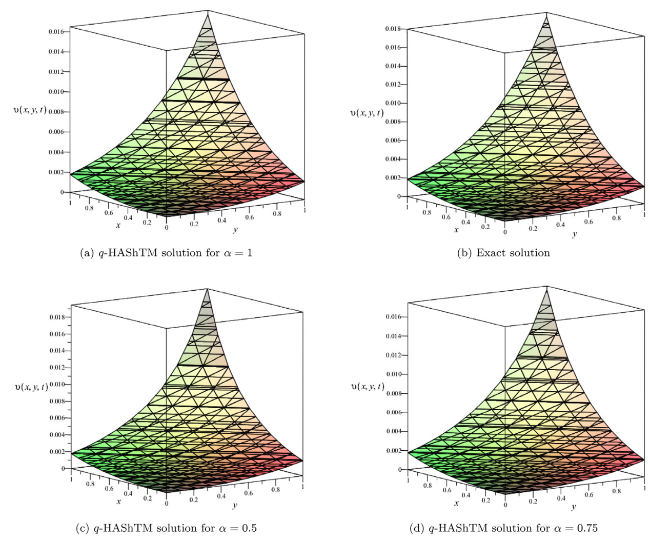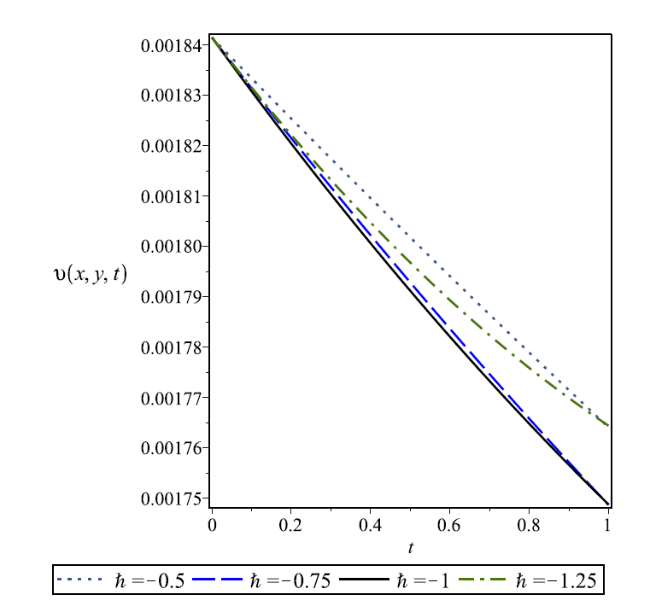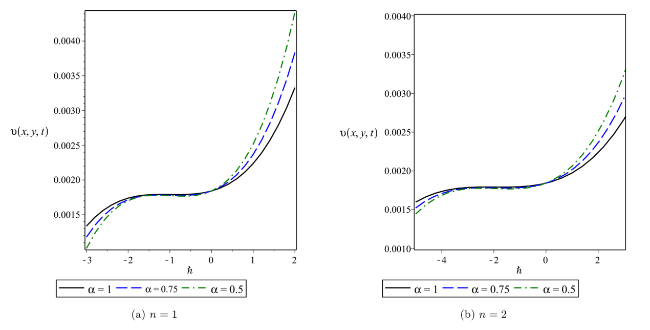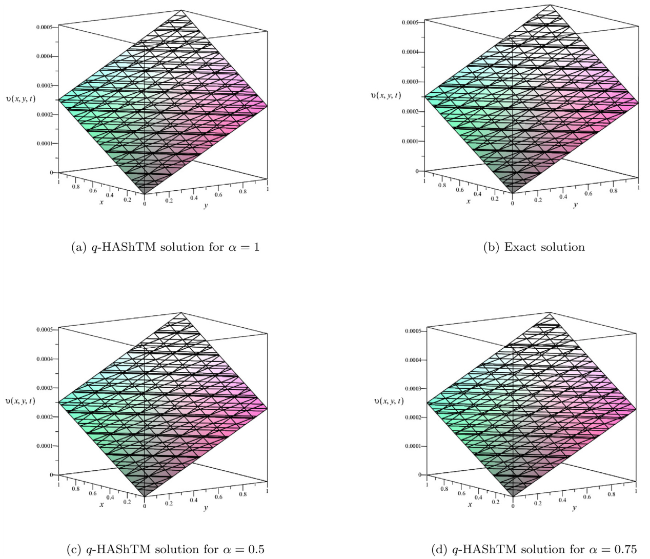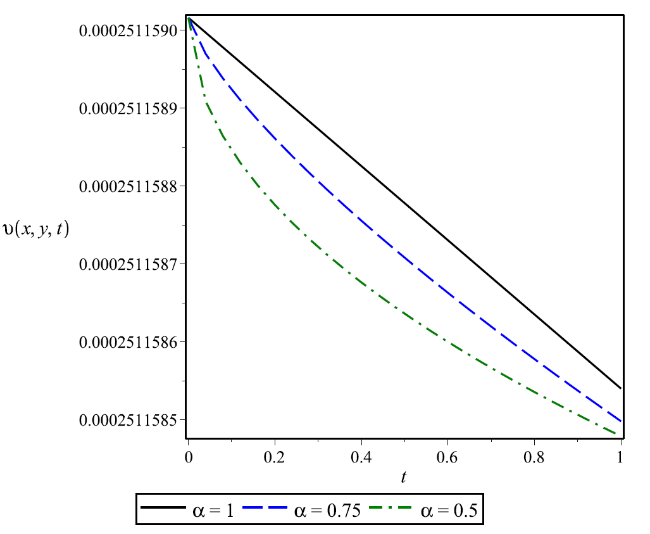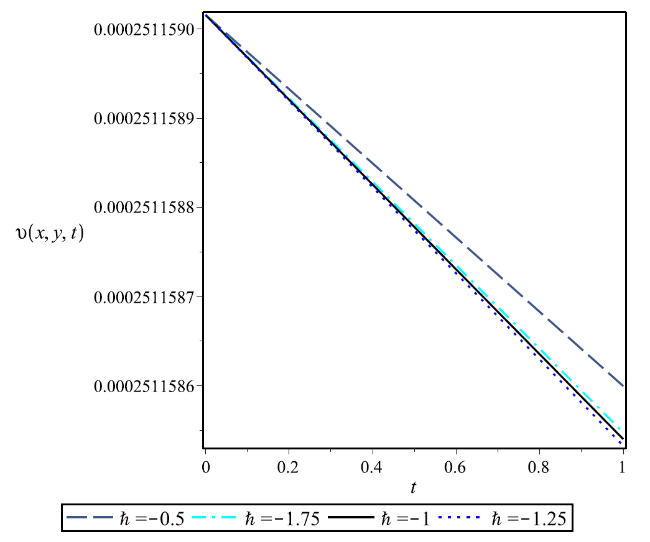Leibniz first mentioned the name of fractional calculus; the well-known German mathematician sent a letter to other well-known mathematicians from France named L’Hopital in the last decade of the 17th century. In the research article, fractional calculus was first introduced by Abel [
7]. Throughout time other great mathematicians Liouville [
8], [
9], Reimann [
10], Caputo [
11] and many others [
12], [
13], [
14], [
15], [
16] contributed their huge knowledge about the field. Fractional calculus has always been getting lots of attention by researchers due to its application in real-world physics problems and almost every engineering branch. There are many approaches available for the solution of nonlinear and fractional order differential equations [
17], [
18], [
19], [
20]. The solution of Fractional order ZK equation(FZK) was illustrated by many techniques as fractional iteration method (FIM) [
21], perturbation-iteration algorithm and continues power series technique [
6], New iterative Sumudu transform method(NISTM) [
22], variational iteration method(VIM) [
23], homotopy perturbation transform method(HPTM) [
5], Laplace Adomian decomposition method(LADM) [
24], fractional natural decomposition method(FNDM) and
q-homotopy analysis transform method(
q-HATM) [
5], optimum homotopy asymptotic method(OHAM) [
26], Homotopy analysis fractional Sumudu transform method(HAFSTM) [
27], natural transform decomposition method(NTDM) [
29] and Elzaki transform iterative method(ETIM) [
28]. All these techniques are providing an approximate solution for fractional nonlinear problem. The homotopy analysis method (HAM) was first introduced by Liao [
30], [
31], [
32] in 1992 with the application of fundamental differentiation and geometry concept i.e. called homotopy. HAM was very beneficial for finding solution of many linear, nonlinear and fractional differential equation based problems [
33], [
34], [
35], [
36], [
37], [
38], [
39], [
40], [
41]. HAM was handy to find the solution without using perturbations or linearisation, and the method required a lot of computational work and a faster computer. To overcome these limitations, in 2012, El-Tawil and Huseen proposed a modified technique of HAM called
q-Homotopy Analysis Method(
q-HAM) [
42], [
43].
q-HAM introduced a parameter
to control the convergence of series solution. As it was complex to find a solution of fractional order differential equation using, Singh et al. [
44] introduced a new technique called
q-HATM, which was a combination of
q-HAM and Laplace transform in 2016. Next year, Singh et al. [
45] used Sumudu transform instead of Laplace transform and provided a new approach to called
q-homotopy analysis Sumudu transform method(
q-HASTM). Jena and Chakraverty [
46] came up with the combination of
q-HAM and Aboodh transform and introduced a method called
q-homotopy analysis Aboodh transform method(
q-HAATM) in 2019. In 2021,
q-homotopy analysis Elzaki transform method(
q-HAETM) was introduced by Singh et al. [
47]. As all those transforms have some limitations and not having direct use to many mathematical and nonlinear problems, it was not directly applicable to some problems. In 2019, Maitama and Zhao [
48], introduced a new transform called Shehu transform to overcome limitations of available integral transforms. Later, Maitama and Zhao applied the Shehu transform successfully with the Homotopy Analysis Method to solve multidimensional fractional diffusion equation [
49]. In this paper, we introduce the new homotopy technique called
q-homotopy analysis Shehu transform method(
q-HAShTM), a combination of the
q-Homotopy analysis method and Shehu transform. This method controls the convergence of the series solution because of two parameters
n and
. The proposed technique is a time-saving technique and less complex than other techniques, and the efficiency is better.


